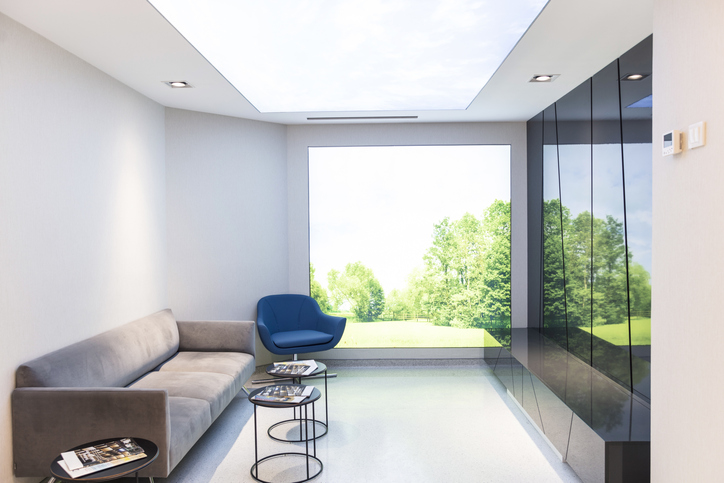Dermapen is a procedure favored by many people who want to have beautiful skin, but the skin immediately after the procedure is very sensitive and requires special care. With proper care, the effects of the Dermapen can be maximized and healthy, beautiful skin can be maintained. Here, we provide expert explanations of the skin condition immediately after the Dermapen, points to keep in mind, and effective care methods, as well as tips on how to achieve ideal skin.

Graduated from the Faculty of Medicine, National Kumamoto University. After serving as the director of major beauty clinics in Japan, etc., he opened Aladdin Aesthetic Clinic in 2023. He is a professional in aesthetic medicine with a doctorate in anti-aging research and many years of experience. With the motto of "Toward the realization of cosmetic medicine without lies," he aims to be the "Only One" together with his patients.
- General condition of the skin immediately after dermapen treatment
- Skin changes during the recovery process immediately after dermapen treatment
- How to care for skin immediately after dermapen? Proper aftercare to maintain beautiful skin
- Precautions to take immediately after a dermapen! Important points to protect beautiful skin
- What are the alternatives to the dermapen procedure? Options for different skin concerns
- summary
General condition of the skin immediately after dermapen treatment

Dermapen treatment is a treatment that stimulates collagen production and skin regeneration by creating microscopic wounds deep within the skin. While this treatment can be expected to produce beautiful skin, there is a specific reaction to the skin immediately after the procedure. This section will further explain the general condition of the skin immediately after the Dermapen treatment.
Redness and swelling
Immediately after the procedure, it is common for the skin to show intense redness. This is due to the inflammatory response of the skin and increased blood flow as the fine needles cause numerous small wounds on the skin. The redness appears as a defensive reaction of the skin, which initiates the skin's regenerative process.
The degree of redness varies from person to person and may appear more intense, especially if you have sensitive skin or are undergoing dermapen for the first time. This redness usually recedes gradually within a few hours to a few days after the procedure, but it may take several days to disappear completely.
At the same time, swelling may be observed. Swelling occurs when the skin shows an inflammatory response to microscopic wounds, causing temporary swelling of the skin tissue. Swelling is especially noticeable in areas with thin skin, such as around the eyes and cheeks. The degree of swelling also varies from person to person and usually diminishes within a day or two after the procedure, but in rare cases it may last for several days.
Dry and tight skin
After a dermapen procedure, the skin tends to dry out easily. This is because the skin's barrier function is temporarily impaired and moisture can easily evaporate. The tightness and flakiness caused by dryness may persist for several hours to several days after the treatment.
Proper moisturizing care is extremely important during this time. Dry skin can be itchy and may cause the skin to scratch involuntarily, so this should be prevented by adequate moisturizing.
It may also leave the skin feeling tight. This occurs because the skin is temporarily strained and is considered part of the skin's regenerative process. This tightness usually disappears spontaneously as the skin recovers, and can also be alleviated with proper moisturizing and soothing care.
Risk of Inflammatory Pigmentation
In addition to redness and swelling, the skin immediately following a dermapen procedure is also at risk for inflammatory hyperpigmentation. In particular, if intense redness persists for an extended period of time or if sun protection is inadequate after the procedure, melanin production may be accelerated and hyperpigmentation may occur.
To prevent this, it is important to avoid UV light immediately after the procedure. Cooling and the use of anti-inflammatory skin care products to reduce inflammation are also effective.
Skin changes during the recovery process immediately after dermapen treatment

After a dermapen treatment, the skin undergoes a recovery process over a period of days to weeks. This process is critical as the skin produces new cells and promotes collagen production. Here is a more detailed description of the skin changes during the recovery process.
Immediately after the procedure to the first day: residual redness and swelling
Immediately after the dermapen procedure and through the first day, the skin is in a very sensitive state. During this period, the skin is left red and swollen due to the numerous tiny wounds created by the microscopic needles. These symptoms are a natural indication of the skin's inflammatory response and signal the start of collagen production.
The skin is particularly sensitive to external stimuli and can be painful to the touch. Therefore, it is recommended to avoid touching the skin as much as possible during this period and to use cooling and soothing care. It is also very important to avoid direct exposure to the sun, especially avoiding UV rays on the day of treatment.
Days 2 to 3: Redness reduction and progressive dryness
After the second day of treatment, the redness will gradually begin to recede. As the inflammation on the surface of the skin gradually subsides, the redness fades and the skin is regaining its original shade. However, a new dry feeling often intensifies during this period, and the skin may feel tight and flaky.
This is because the skin's barrier function is temporarily impaired, allowing moisture to evaporate more easily. Moisturizing is extremely important to combat this dry feeling. In particular, the use of moisturizing products containing hyaluronic acid and ceramide can help improve the skin's ability to retain moisture.
Some individuals may also experience itching during this time of the year. This is a sign that the skin is generating new cells and the regeneration process is underway. However, even if you feel itchy, you should avoid scratching your skin. Scratching risks opening wounds and worsening inflammation, so it is advisable to keep the skin thoroughly moisturized and use cooling and soothing products.
Days 4 to 5: Calming of the skin and manifestation of the Rejuvenation effect
After the fourth day of treatment, the skin condition will gradually begin to settle. The redness and swelling will mostly subside and the dryness will ease. Many people notice an improvement in skin texture at this stage.
Pores are tightened, skin becomes smoother and more supple. This is the manifestation of the Dermapen Rejuvenation effect. The skin regeneration process is in full swing, and the production of new collagen and elastin increases the skin's elasticity and improves its overall texture.
During this period, skin care is important to aid in skin recovery. In particular, the use of serums containing vitamin C and anti-aging creams can further stimulate collagen production. In addition, UV protection remains important. Exposure to UV rays while the skin is recovering increases the risk of hyperpigmentation, so the use of sunscreen is essential.
Day 7 and beyond: final recovery and long-term effects
By the time one week has passed since the procedure, the skin has almost completely recovered and the effects of the dermapen can be felt well. The redness and swelling will have completely subsided and the skin will have regained an even, smooth texture.
Pores will be tightened, blemishes and dullness will fade, and an overall brighter, healthier skin tone will be achieved. In addition, skin elasticity will increase, and you will experience firmer, younger-looking skin.
After this period, the effects of the dermapen continue to appear gradually. Multiple treatments will further strengthen the effect and improve wrinkles, spots, and acne scars. Continuous skin care is essential for maintaining beautiful skin in the long term. In particular, daily moisturizing care and UV protection, as well as regular dermapen and other cosmetic procedures, will help maintain healthy and beautiful skin.
How to care for skin immediately after dermapen? Proper aftercare to maintain beautiful skin

Post-dermapen procedure care is very important to maximize the effects of the procedure and to support skin recovery. In particular, the skin is in a very delicate state for 24 hours immediately after the procedure, and proper care is required. This section details specific care instructions for the immediate post-dermapen period.
Care in the first 24 hours is important! How to Reduce Inflammation
The first 24 hours after a dermapen procedure is an especially important period to promote skin recovery. Care during this period is based on cooling and soothing, as the skin is prone to inflammation.
First, it is recommended that the skin be cooled immediately after the procedure with a skin cooling item. This will help to constrict blood vessels and reduce redness and swelling. When cooling the skin, it is important to do so gently, using an ice pack wrapped in cloth or a special gel pack, so as not to put direct pressure on the skin.
Next, the use of anti-inflammatory skin care products can be effective. Gels and sprays containing aloe vera or chamomile extract have a soothing effect on the skin and help reduce inflammation. It is also important to avoid touching the skin as much as possible to reduce inflammation. Avoid forcibly touching or rubbing the skin too hard, as the skin is in a sensitive state.
Use of Vaseline and its effects
Vaseline is a very effective item in post-dermapen procedure care. Vaseline supports the skin's barrier function and prevents moisture evaporation. Immediately after a dermapen procedure, the skin barrier function is impaired and the skin is extremely sensitive to external stimuli. Therefore, the use of Vaseline creates a protective film on the skin surface to protect it from external stimuli.
Vaseline is also extremely moisturizing and effective in preventing dryness. Since dryness is a factor that slows skin recovery, a thin, even application of Vaseline will keep the skin well protected and adequately hydrated. However, care should be taken with the amount of Vaseline used, as a very thick application can interfere with the skin's ability to breathe.
Proper moisturizing methods and recommended moisturizing products
Proper moisturizing is important because skin is prone to dryness after a dermapen procedure. Moisturizing is essential to restore the skin's barrier function and prevent dryness and itching after the procedure. The following points are important to keep in mind when performing moisturizing care.
First, it is recommended that moisturizers be hypoallergenic, fragrance-free, and additive-free. Products containing hyaluronic acid, ceramide, glycerin, and other highly effective moisturizers are best. These ingredients penetrate the skin's stratum corneum and help retain moisture.
Moisturizing care is effective when applied first after cooling the skin. After cooling calms the skin, lotion is applied to prepare the skin, followed by the application of moisturizing cream or gel. Lotion should be used by gently pressing the lotion into the skin with your hands, not with cotton wool, to avoid unnecessary irritation.
It is also essential to use sunscreen during the day, as the skin is very sensitive to UV rays after the procedure. Sunscreens should be SPF 30 or higher and as non-irritating as possible. UV rays can exacerbate skin inflammation and risk pigmentation, so it is important to use a hat and sunglasses when going outside.
Precautions to take immediately after a dermapen! Important points to protect beautiful skin

The skin immediately following a dermapen procedure is extremely delicate and requires not only proper care, but also a thorough understanding of the actions and products to avoid. This section details the precautions that should be taken immediately after a dermapen.
Three actions to avoid!
Immediately after a dermapen procedure, the skin is in a very sensitive state, and actions and products that are normally fine may adversely affect the skin. Avoid using strong cosmetics, peeling agents, scrubs, etc. for several days after the procedure.
These products can irritate the skin and aggravate irritation. In particular, cosmetics containing alcohol and products with strong fragrances should be avoided. Immediately after the dermapen, it is important to choose hypoallergenic skin care products that are gentle on the skin.
In addition, the skin immediately after the procedure is extremely sensitive to ultraviolet light. Exposure to UV rays increases the risk of inflammatory hyperpigmentation, which can leave spots and dullness. Therefore, it is important to always use sunscreen when going out and to physically block UV rays with a hat or sunglasses. In addition, try to avoid going out during the daytime as much as possible, and avoid times when UV rays are strong.
Other activities that increase body temperature, such as strenuous exercise, saunas, and hot yoga, should be avoided after dermapen treatment. These activities may aggravate redness and swelling as the increased body temperature stimulates blood flow. It is also important to shower immediately after exercise, as sweating can increase the risk of infection by making the skin more susceptible to bacteria.
Precautions in skin care and makeup
Special care must also be taken in washing the face and applying makeup after the dermapen procedure. It is recommended to refrain from washing one's face and wearing makeup for 12-24 hours immediately following the procedure. This is because the skin immediately after the procedure is very delicate and friction during washing and the water used may irritate the skin.
Then, when washing your face for the first time, gently rinse it with lukewarm water. To avoid strong friction, it is best to use a foaming net to create enough foam and gently wash your face with that foam.
It is recommended that makeup be refrained from resuming for at least 24 hours after the procedure. Makeup products that stick to the skin, especially foundations and concealers, can block pores and interfere with skin recovery.
The specific timing for resuming the procedure will depend on the individual's skin recovery rate, but it should be when the redness and swelling have subsided and the skin has calmed down. If you plan to go out after the procedure, it is a good idea to use light moisturizing creams, colored sunscreens, or other products that are not too harsh on the skin.
What are the alternatives to the dermapen procedure? Options for different skin concerns

Although dermapen is an effective procedure for stimulating skin regeneration and improving wrinkles, spots, and acne scars, there are several other alternative procedures that have similar effects. Depending on the purpose of the procedure and the condition of the skin, these alternatives to the Dermapen can be considered.
fractional laser
Fractional laser is a treatment that stimulates collagen production and aids in skin renewal by applying minute amounts of thermal energy to the skin. This procedure is effective in improving skin elasticity, wrinkles, spots, and acne scars.
Fractional laser is suitable for those seeking skin rejuvenation similar to Dermapen because it works deep without damaging the skin's surface.
Fractional laser is also effective in improving uneven skin tone and texture, and is especially recommended for sun-damaged skin. This procedure often has a shorter recovery time than dermapen, making it suitable for busy people.
Micro Needling RF
Micro needling RF is a procedure similar to dermapen, but it uses radiofrequency (RF) along with microscopic needles to approach the skin. The thermal energy of the RF acts directly on the dermal layer to promote collagen and elastin production. This procedure is particularly effective for deep wrinkles, sagging skin, and open pores.
Micro needling RF is considered more effective than dermapen and is suitable for those seeking immediate results and deeper skin regeneration. It also features faster recovery due to less damage to the skin's surface.
chemical peeling
Chemical peels are procedures that use acids to remove dead skin cells from the surface of the skin and promote skin renewal. Unlike dermapen, chemical peels work primarily on the surface of the skin and are suitable for improving dullness, acne, and mild blemishes.
Chemical peels are recommended for those who wish to normalize skin turnover and achieve brighter, healthier skin. It can also be used in combination with a dermapen for more effective skin beautification. For example, applying Dermapen after preparing the skin surface with chemical peeling improves the penetration of the ingredients and a synergistic effect can be expected.
hyaluronic acid injection
Hyaluronic acid injections are procedures in which hyaluronic acid is injected directly into the skin to improve wrinkles and sagging skin, and to add firmness and moisture to the skin. It is particularly suited to compensate for localized volume loss, such as dark circles under the eyes and laugh lines.
Hyaluronic acid injections are attractive because they are fast-acting and the effects can be felt immediately after the procedure. It is also recommended for those who seek a natural-looking finish or who wish to concentrate improvement on a specific area. When used in combination with a dermapen, overall skin texture improvement and localized volume enhancement can be achieved at the same time.
summary
Understanding and practicing proper care immediately after the dermapen will help you get the full effect of the procedure and maintain beautiful skin. Follow the precautions and continue with effective skin care to achieve ideal skin. Do not be dogmatic and consult with your doctor's advice during consultations, etc., and enjoy your journey toward beautiful skin by undergoing Dermapen with peace of mind.
At Aladdin Aesthetic Clinic, based on our many years of experience in cosmetic medicine and cosmetic dermatology and the knowledge of our doctoral degree, we provide counseling that aims to be "only one", offering the best treatment for each person we meet. We offer only the necessary treatments without any unnecessary information or suggestions.
Feel free to use our official LINE account for 24-hour counseling and reservations. Please feel free to contact us for free counseling for the first time or if you have any concerns.






